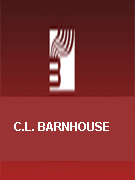Results
-
 £64.95
£64.95FANTASIA ON BRITISH SEA SONGS (Army Journal) - Wood, Henry J. - Duthoit, W. J.
Army Journal 708. Duration 17'. Contains: Admiral's Salute; Action; General Assembly; Landing Party; Quick, Double, Extend and Close; The Anchor's Weighed; The Saucy Arethusa; Tom Bowling; Jack the Lad; Farewell and Adieu, Ye Spanish Ladies; Home, Sweet Home; See the Conquering Hero Comes; Rule Britannia. A full listing of Chappell Army Journals is available - click the Chappell symbol on the home page. Each set includes Conductor (Condensed Score); 2 x Solo B flat Clarinet; 2 x 1st B flat Cornet; 2 x Basses and 1 each of all other parts as originally published. We are unable to supply parts not included in the original sets.
Estimated dispatch 7-14 working days
-
 £64.95
£64.95FIDDLER ON THE ROOF (Selection) (Army Journal) - Sharpe, Trevor Lee
Army Journal 862. A full listing of Chappell Army Journals is available - click the Chappell symbol on the home page. Printed to Order. Each set includes Conductor (Condensed Score); 2 x Solo B flat Clarinet; 2 x 1st B flat Cornet; 2 x Basses and 1 each of all other parts as originally published. We are unable to supply parts not included in the original sets.
Estimated dispatch 7-14 working days
-
 £64.95
£64.95GEORGE GERSHWIN (A Symphonic Portrait) (Army Journal) - Chase, Bruce
Army Journal 879. Includes: Summertime; They Can't Take That Away form Me; A Foggy Day; It ain't Necessarily So; Bess You Is My Woman Now; Love is Here to Stay. A full listing of Chappell Army Journals is available - click the Chappell symbol on the home page. Printed to Order. Each set includes Conductor (Condensed Score); 2 x Solo B flat Clarinet; 2 x 1st B flat Cornet; 2 x Basses and 1 each of all other parts as originally published. We are unable to supply parts not included in the original sets.
Estimated dispatch 7-14 working days
-
 £64.95
£64.95GRENADIERS (Waldteufel)(Army Journal) - Waldteufel, Emile
Army Journal 743. A full listing of Chappell Army Journals is available - click the Chappell symbol on the home page. Printed to Order. Each set includes Conductor (Condensed Score); 2 x Solo B flat Clarinet; 2 x 1st B flat Cornet; 2 x Basses and 1 each of all other parts as originally published. We are unable to supply parts not included in the original sets.
Estimated dispatch 7-14 working days
-
 £64.95
£64.95HELTER SKELTER (Xylophone/Army Journal) - Lemon, W. G.
Army Journal 784. Xylophone & Wind Band. A full listing of Chappell Army Journals is available - click the Chappell symbol on the home page. Printed to Order. Each set includes Conductor (Condensed Score); 2 x Solo B flat Clarinet; 2 x 1st B flat Cornet; 2 x Basses and 1 each of all other parts as originally published. We are unable to supply parts not included in the original sets.
Estimated dispatch 7-14 working days
-
 £64.95
£64.95LATE TWENTIES, The (Army Journal) - Sharpe, Trevor Lee
Army Journal 861. Includes: Spread a Little Happiness; Softly, as In a Morning Sunrise; Desert Song; Birth of the Blues; My Heart Stood Still; S'Wonderful; Lover Come Back to Me; The Man I Love. A full listing of Chappell Army Journals is available - click the Chappell symbol on the home page. Printed to Order. Each set includes Conductor (Condensed Score); 2 x Solo B flat Clarinet; 2 x 1st B flat Cornet; 2 x Basses and 1 each of all other parts as originally published. We are unable to supply parts not included in the original sets.
Estimated dispatch 7-14 working days
-
 £64.95
£64.95LONDON (Suite) (Army Journal) - Coates, Eric - Williams, Gerrard
Army Journal 607. Includes: Covent Garden; Westminster (Meditation); In Town Tonight (Knightsbridge March). A full listing of Chappell Army Journals is available - click the Chappell symbol on the home page. Printed to Order. Each set includes Conductor (Condensed Score); 2 x Solo B flat Clarinet; 2 x 1st B flat Cornet; 2 x Basses and 1 each of all other parts as originally published. We are unable to supply parts not included in the original sets.
Estimated dispatch 7-14 working days
-
 £64.95
£64.95LONDON LANDMARKS (Suite) (Army Journal) - Wood, Haydn - Duthoit, W. J.
Army Journal 729. Includes: Nelson's Column; Tower Hill; Horse Guards (Whitehall). A full listing of Chappell Army Journals is available - click the Chappell symbol on the home page. Printed to Order. Each set includes Conductor (Condensed Score); 2 x Solo B flat Clarinet; 2 x 1st B flat Cornet; 2 x Basses and 1 each of all other parts as originally published. We are unable to supply parts not included in the original sets.
Estimated dispatch 7-14 working days
-
 £59.40
£59.40New Century (Concert Band - Score and Parts) - Grainger, Percy Aldridge - Kreines, Joseph
We are pleased to be able to make this wonderful Grainger music available to the bands of the world. This short work features a simple tune, richly harmonized with stately chords and decorated counter-melodies. VERY NICE!
Estimated dispatch 7-14 working days
-
 £64.95
£64.95OKLAHOMA (Army Journal) - Hammerstein & Rodgers - Duthoit, W. J.
Army Journal 734. Includes: I Cain't Say No; Out of My Deams; Surrey With the Fringe on Top; Oh What a Beautiful Morning: Many a New Day, Oklahoma, People Will Say We're in Love. A full listing of Chappell Army Journals is available - click the Chappell symbol on the home page. Printed to order. Each set includes Conductor (Condensed Score); 2 x Solo B flat Clarinet; 2 x 1st B flat Cornet; 2 x Basses and 1 each of all other parts as originally published. We are unable to supply parts not included in the original sets.
Estimated dispatch 7-14 working days
